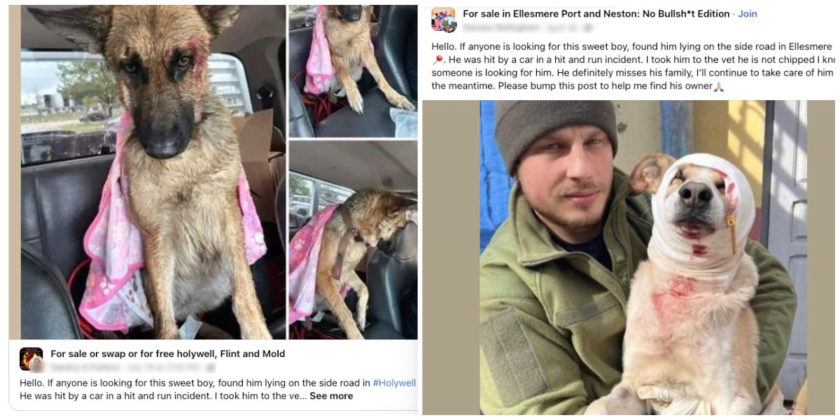Watch out… the “injured dog” Facebook scam is doing the rounds locally again

Facebook users should be alert to a scam that preys on animal lovers. This involves a fabricated story about a dog, supposedly left for dead after a hit-and-run accident, and allegedly under veterinary care.
These emotionally manipulative posts adhere to a similar format, primarily differing by the reported location from which they stem.
This deception is commonly found in local buy-and-sell groups, where a sense of community and trust already exists.
The scam post implores readers to ‘bump up’ or share the post, in an effort to find the dog’s supposed owners.
However, once the post attains a specific number of shares and likes, it suddenly transforms into an advertisement, equipped with a click-through link.
Scammers use a randomly sourced image, and disable comments to prevent their fraudulent activity from being exposed.
While these types of scams circulate internationally on Facebook, the latest version falsely purports to originate from local areas.
One observed circulating this morning reads:
“Hello. If anyone is looking for this sweet boy, found him lying on the roadside in #Holywell. He was hit by a car in a hit-and-run incident. I took him to the vet; he is not chipped. I know someone is looking for him. He definitely misses his family, I’ll continue to take care of him in the meantime. Please bump this post to help me find his owner.”
Content switcheroo scams on Facebook are incredibly manipulative, states online security experts Malwarebytes, here they offer some advice:
Avoiding Facebook hoaxes
- No replies allowed. Disabled replies can be a major warning flag. If you’re asking for help or giving a warning, why limit the number of people who can reply?
- If there’s a photograph, try performing a reverse image search. This is where you try to deduce the origin of the image. These scams are lazy; image reuse is rife, often going back many years. There are dedicated sites for this, such as TinEye. There, you either upload an image or provide a URL and TinEye will find any matches from across the internet. Most search engines also offer some reverse image search functionality, though quality of results will inevitably vary. It’s worth noting that sometimes scammers will flip an image (from left to right or vice versa) to try and fool reverse image searches. Deepfaked images will also typically not produce results.
- Copy / paste that text. Take the text of the suspicious post and search for that, too. You may well find a whole raft of cut and paste efforts across multiple social media portals.
- Freshly baked scammers. If the site the message or photo is posted to displays details about the person who posted it, see if it’ll let you observe things like account creation date or if the name on the account has been altered. A new account with no other content has likely been set up to scam people. You can also search for the user’s name on a free people search site (enter their full name e.g., Catherine Doubler), which will show you every social media profile they’ve made.
Spotted something? Got a story? Send a Facebook Message | A direct message on Twitter | Email: [email protected] Latest News









